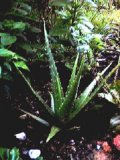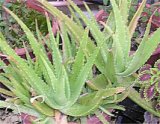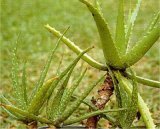Submitted by zhenliang on

Our country Malaysia lies in the tropical zone that is rich in plants and vegetations. Here, we can obtain various kinds of leaves, flowers, seeds, roots, stems, barks and wood to be used as medicine. It is estimated that there are approximately 2,000 types of very useful medicinal plants in this region. On the request from several readers, we will be writing a series of short informative articles on these medicinal plants for the Than Hsiang e-Zine.
Here is a short story about plants and their medicinal uses.
Once, a learned teacher asked Dr. Jivaka Kaumara-Bhrtya, the royal physician of King Bimbisara in Rajgaha, to go into the woods to find him a plant that cannot be used as a medicine. After searching the woods and fields, mountains and forests, Dr. Jivaka came back to tell the teacher that there were no such plants. Incidentally, Dr. Jivaka was also the physician for our Lord Buddha on many occasions¡±. The moral of this story is that all plants have medicinal value. They are just plants to us unless we know how to use them.
The Aloe Vera is the native of the West Indies, Canary Islands, Cape Verde and Madeira. This plant can now be found all over the tropical world because it can be easily planted and has medicine value. It is available the whole year round and can grow to a height of about 50 cm. A succulent herb, it is also planted as a nice ornamental home garden plant. Its leaves are fleshy and contain a thick transparent jellylike substance. The young plants have short white lines along its leaves. When matured, these lines will fade. Only the matured plants should be used as medicine.
The jelly in the leaves are used in a number of cosmetic and medicinal concoctions for the treatment of pimples, acne and mouth ulcers as well as to control bleeding, piles itch and as a relief for arthritic pains and mild burns. The Chinese use the plant juice as a mild laxative and as a cleansing solution for piles, abscesses and scabies. It can also be used to reduce heat in the liver, and red eyes caused by our body heat. The young leaves are slightly toxic, and thus must not be eaten raw as it will cause stomachache and loose bowels.
The jelly from the matured leaves can be cut into small cubes and boiled with rock sugar to produce a sweetened cooling drink.
Scientific name: Aloe barbadensis (Mill),
Common name: Aloe vera,
Chinese name: Lu Hui
Thai name: Waan Haang Chorakhe



